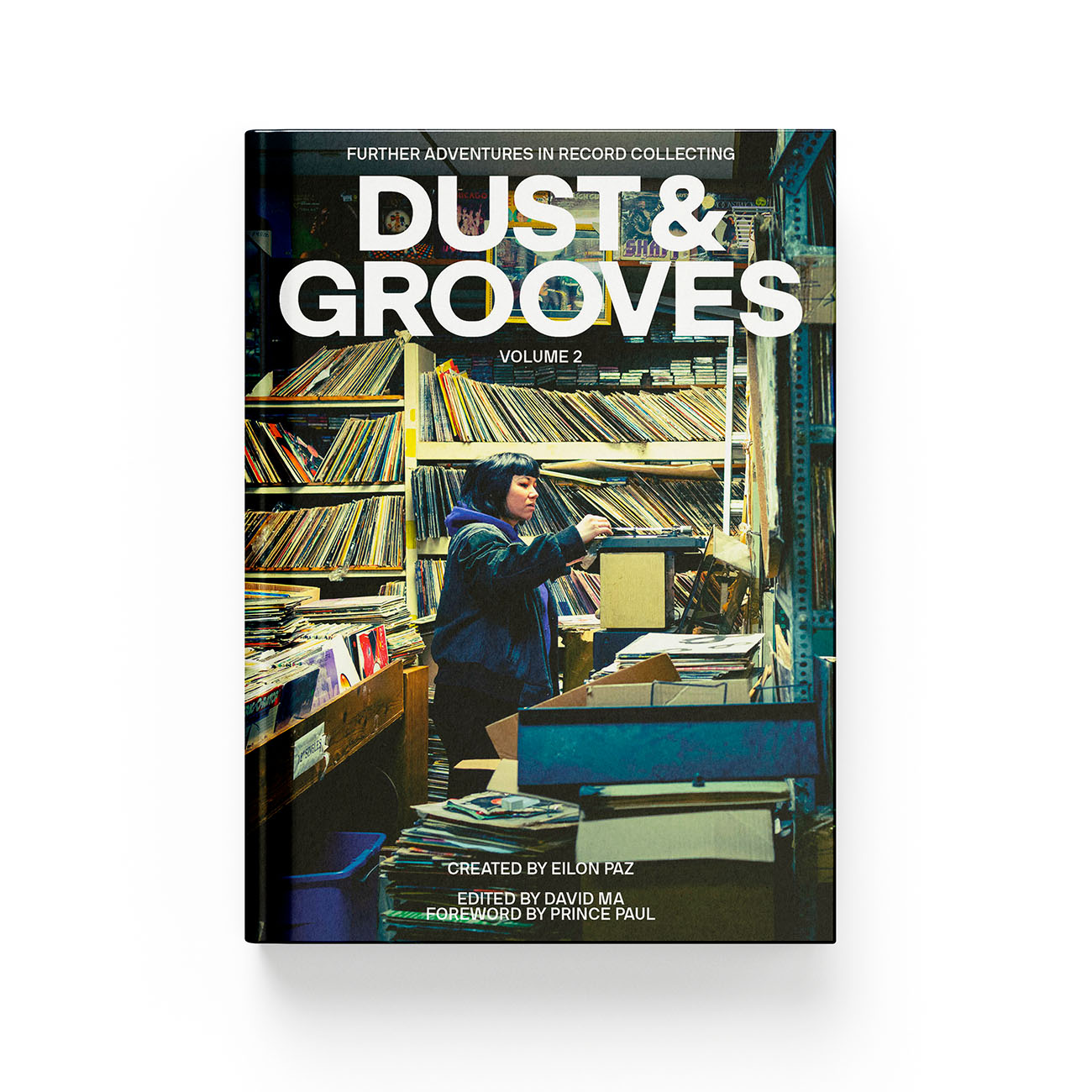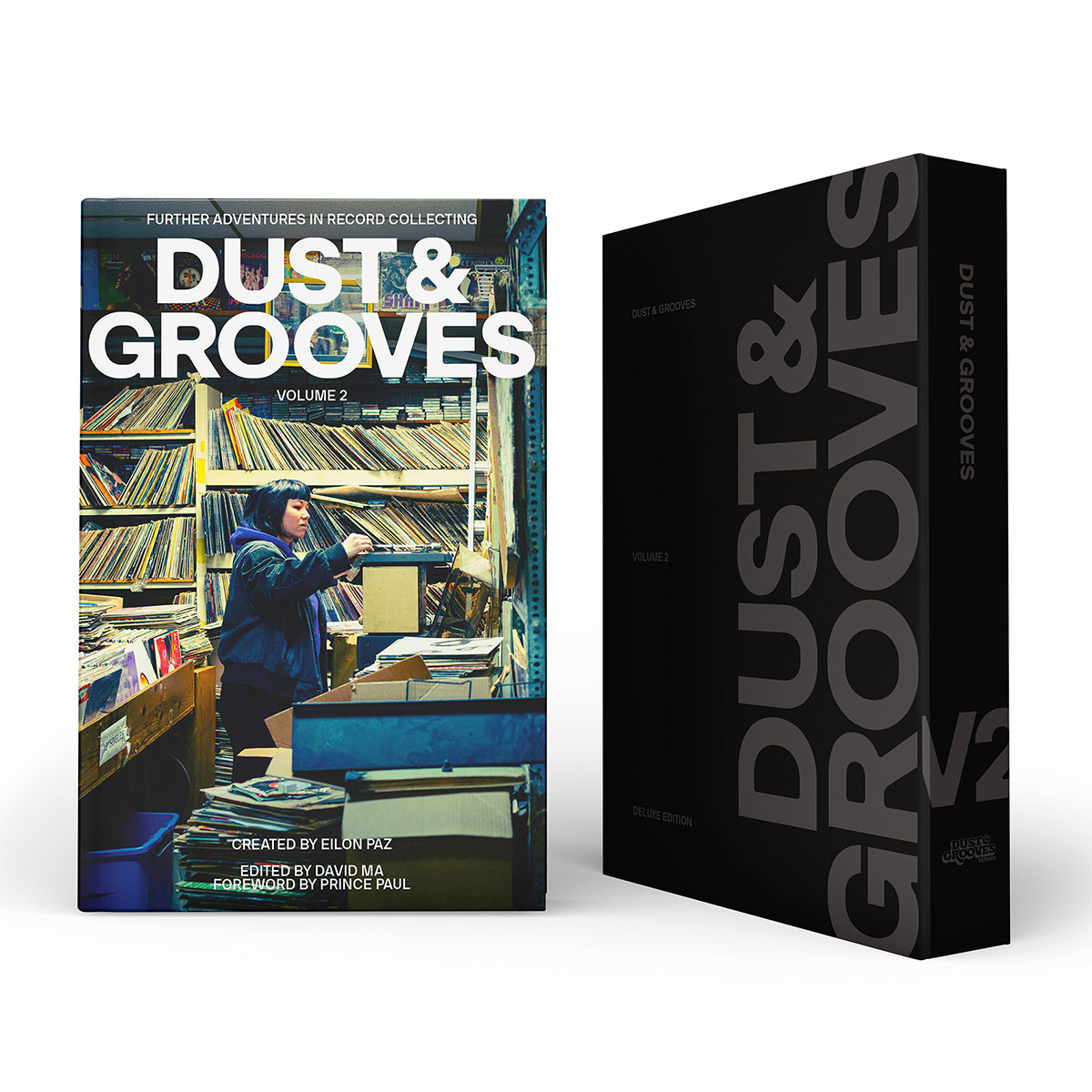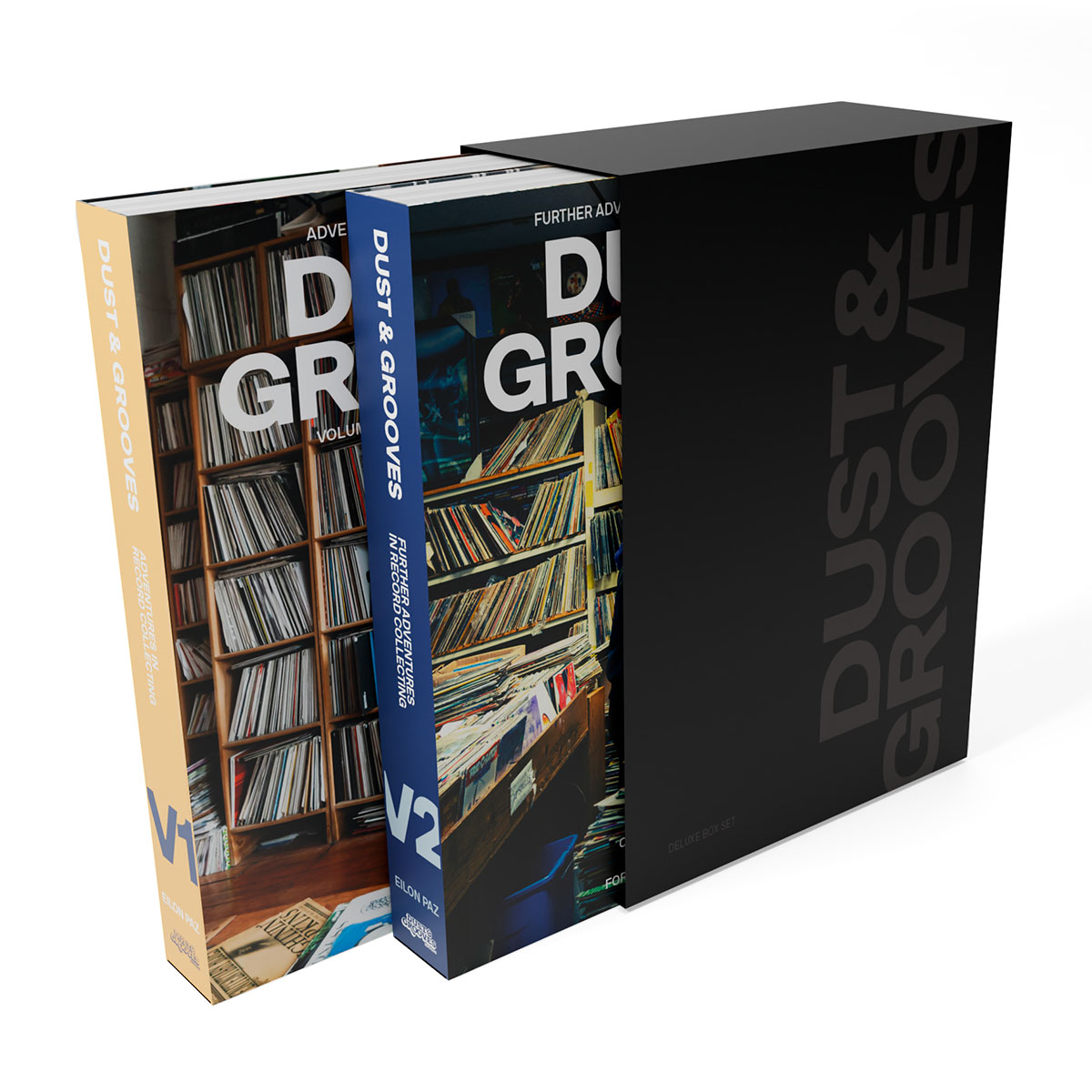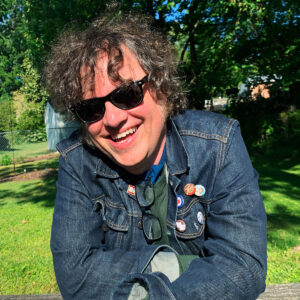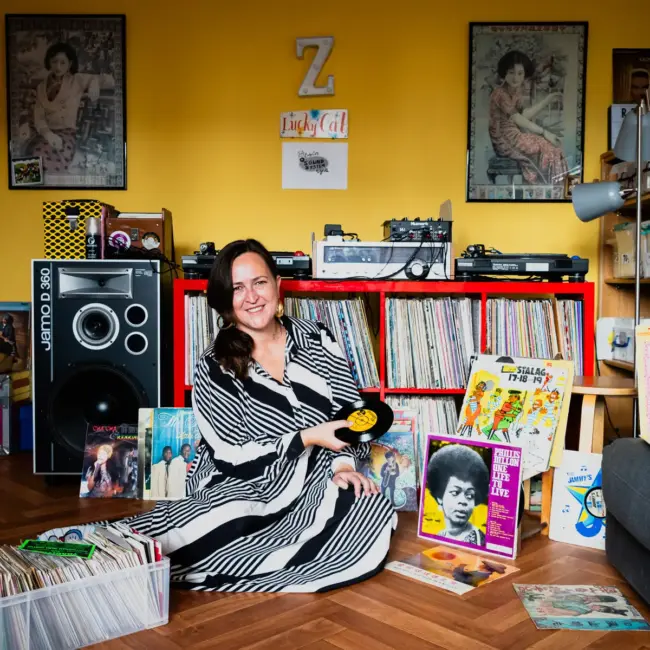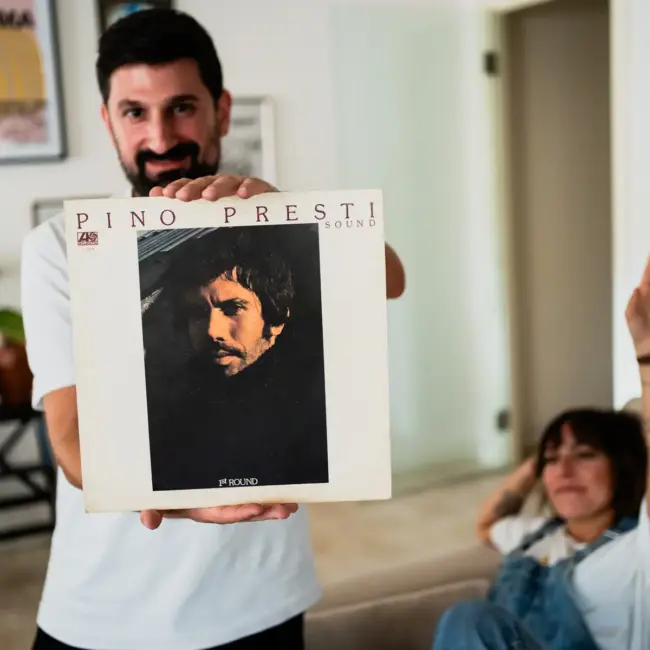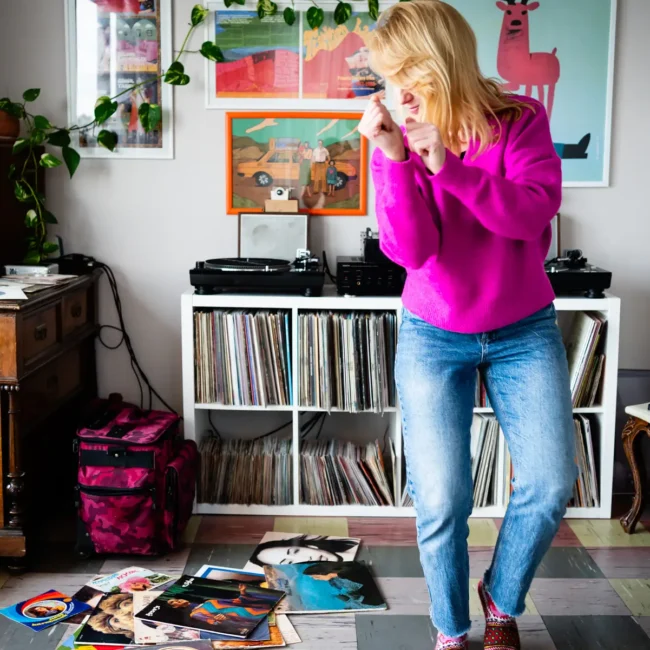Now firmly established as an important part of the music retail ecosystem, Record Store Day was launched in 2008 as a celebration of the independent record store, as well as a means to boost consumer awareness of the mom-and-pop retailers that were still stocking new vinyl releases even as big music chains like Tower Records were going under. Initially conceived as an annual US event (but now expanded to a twice-yearly international one), RSD introduces hundreds of new limited-edition vinyl reissues and special one-off collector’s items into the marketplace every year, making it the largest recurring worldwide event in music history.
Unsurprisingly, Michael Kurtz—one of the co-founders of Record Store Day—has indie record stores in his blood. He bought his first Beatles single at one in 1967, while still a kid in Wilmington, North Carolina, then moved behind the counter to work at Wilmington’s legendary Schoolkids Records in 1979. Now the President of the Department of Record Stores, the largest coalition of independent record stores in North America, Kurtz currently lives with his family in Bozeman, Montana.
Kurtz recently took us up to his Bozeman attic, where he pulled out some of his favorite vinyl items, ranging from that crucial first Beatles single to a 12-inch single of U2’s “The Blackout”—released for Record Store Day in 2017, Kurtz’s copy is autographed by everyone who was involved in the record’s production. He also talked about how critics got the Rolling Stones’ The Blackout all wrong, his love of Apple Records, his involvement with Record Store Day, and why everything always comes back to the Beatles.
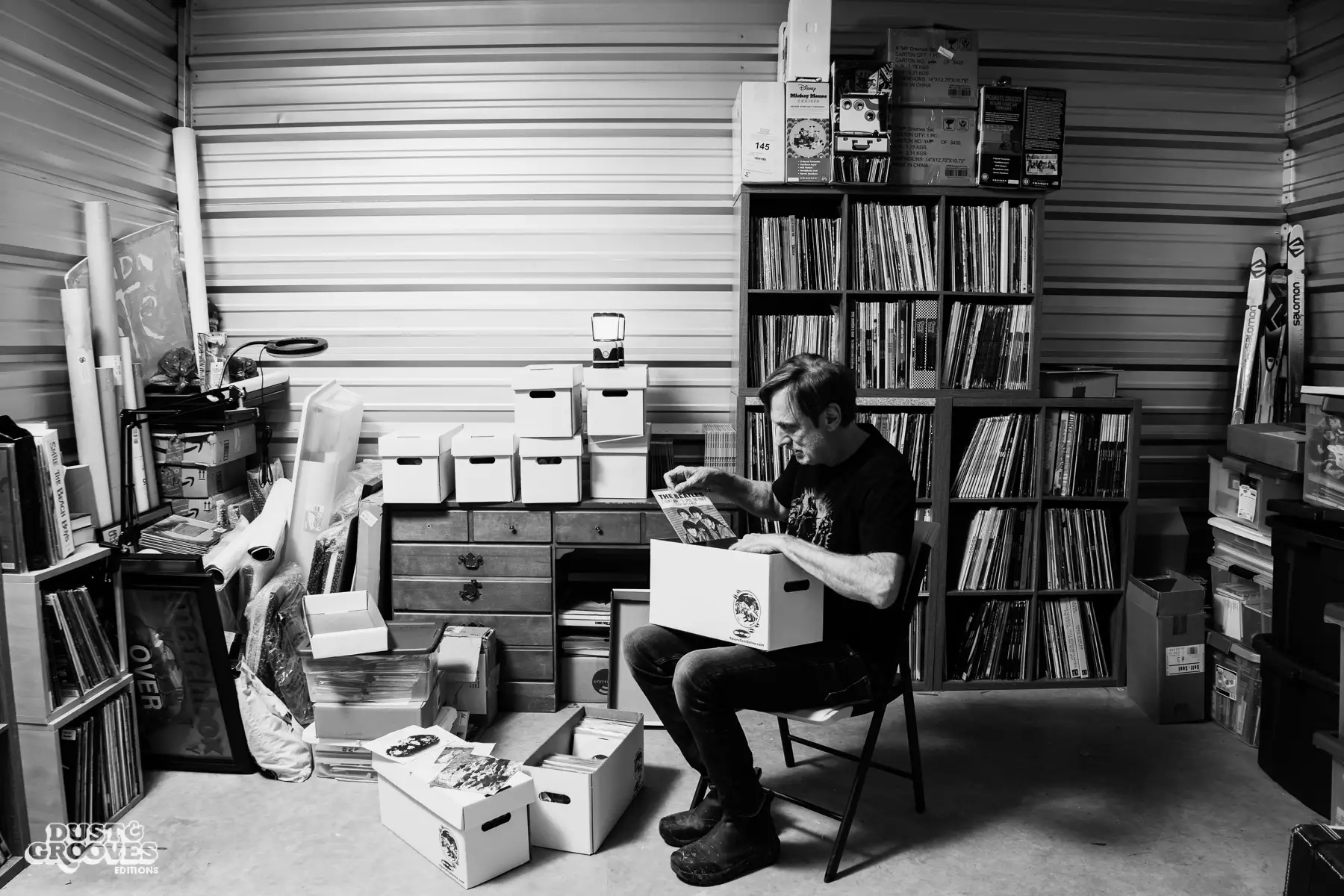
“I'd always go there [the local redneck bar] and torture all of the barflies by playing Yoko Ono B-sides, which I just got the biggest kick out of.”
Michael Kurtz Tweet
It seems like Beatles records, and records by associated artists on the Apple label, occupy a prominent place in your collection.
My story is the same as so many—seeing them on Ed Sullivan—and I had an older brother who had great taste in music, so that got me started. In the beginning, it was all about the Beatles, which kind of restricted everything from then on because very few bands could hit that high mark and do what they did consistently. So when it came to 7-inches, mainly what I collected and kept over the years was all the Beatles. I do have other things, all kinds of rare things I picked up at the time when I was working in record stores, but yeah—it all starts with the Beatles.
Do you remember the first record you bought?
My first 7-inch was “Strawberry Fields Forever” and “Penny Lane.” That was fourth grade; my dad was in Vietnam. My brothers had already gotten so many other records too, but I was like ten years old, so that was my first chance to use my lunch money to buy 7-inch records.
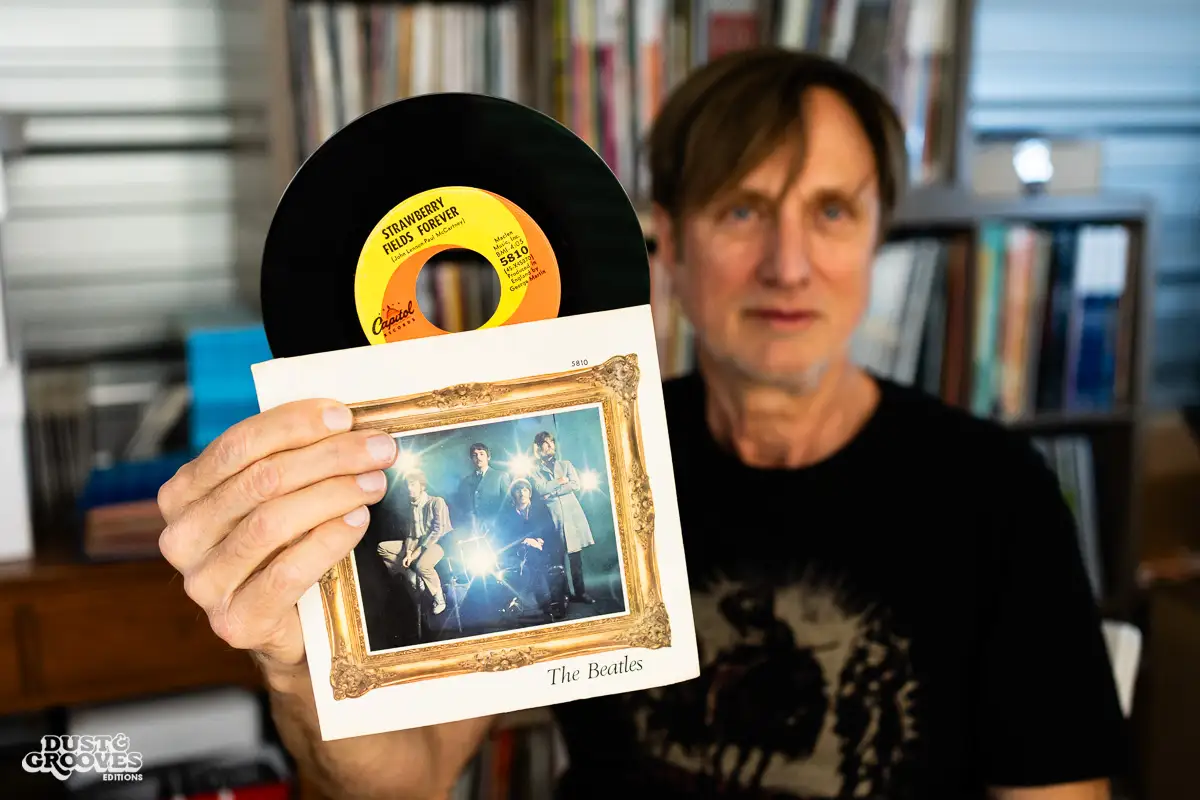
Did you hear “Penny Lane” on the radio first, or was it “Strawberry Fields Forever”?
Oh, I don’t remember. I lived in Wilmington, North Carolina, and I don’t even remember if there was a station that played those particular Beatles songs. But at that point, whatever the Beatles did, I waited for in anticipation—like, “What is it going to be?” And then I’d try to get to the store to buy the record as soon as I could. After that, it was always a competition with my brothers to see who could get it first.
“In the beginning, it was all about The Beatles, which kind of restricted everything from then on because very few bands could hit that high mark and do what they did consistently.”
Michael Kurtz Tweet
Was your Beatles fandom what led you to records by artists like Badfinger and Billy Preston?
Oh yeah, for sure. I mean, I was lucky. There was a record store called McGrath’s in Wilmington, and the guy who ran it was a big Beatles fan, so he had a whole section in the record store which was nothing but Apple Records, which was a pretty classy thing to do. Apple releases, they’re all just beautiful—I mean, the labels look really cool, the images on the records, they really kind of went the extra mile to give a fan something pretty cool. All the picture sleeves, all the Beatles stuff and all the solo stuff at the time, and all of the things [by other artists] that they were releasing, like Jackie Lomax, Trash, Yoko’s singles… God, there’s a bunch of them. Black Dyke Mills Band, who did the big brass band version of “Yellow Submarine”… All of this is coming back to me. It was almost like going to an art gallery. It was just so amazing, that experience.
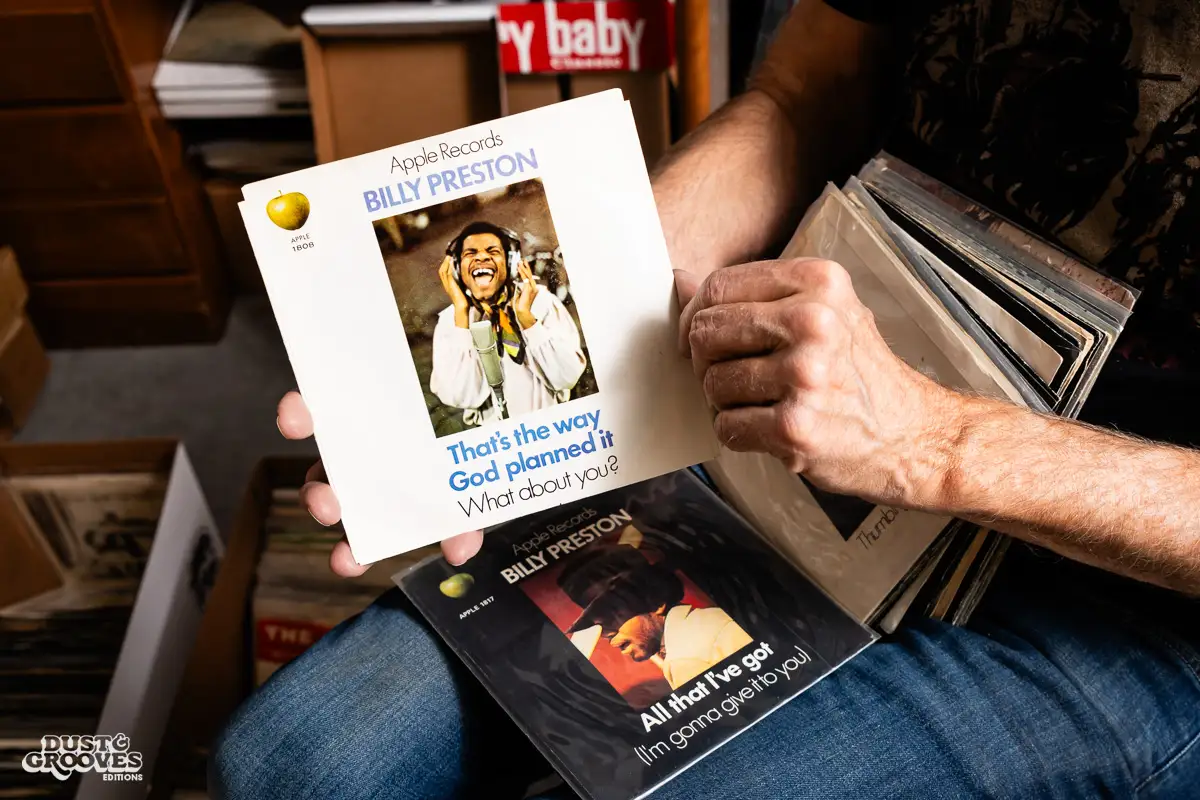
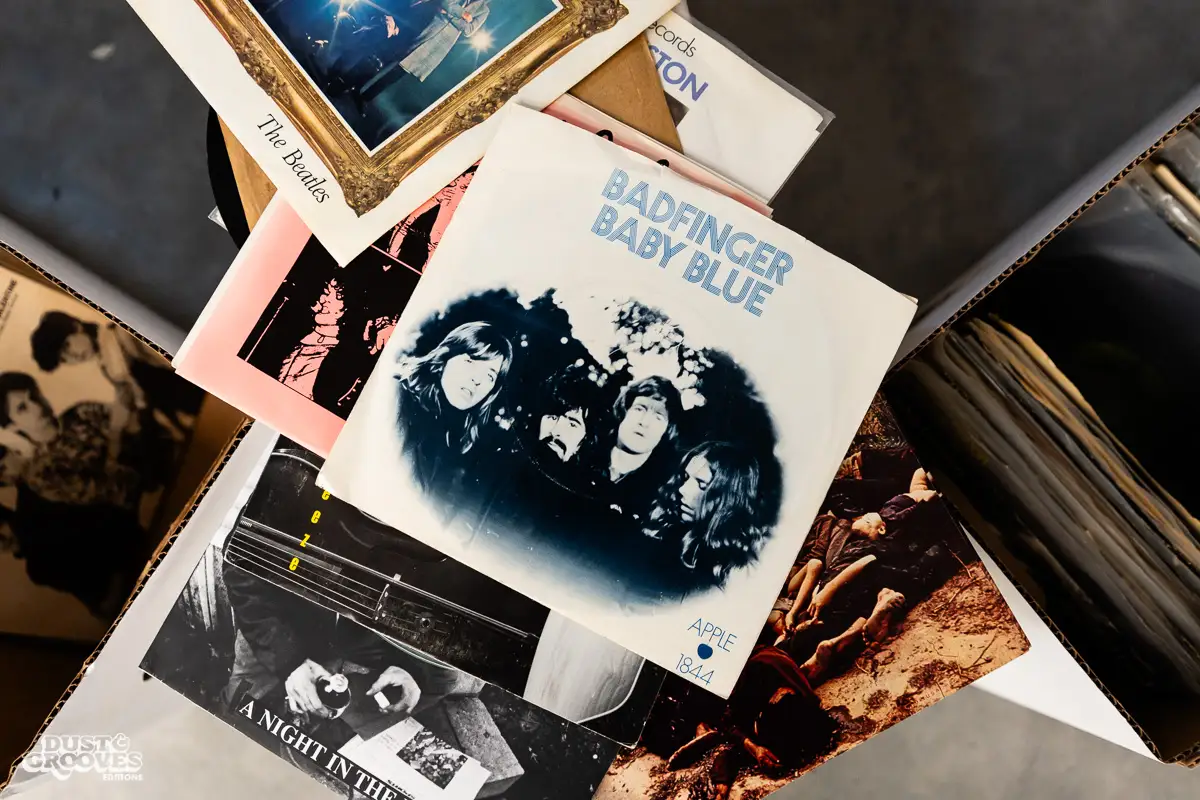
Yoko’s stuff was pretty divisive at the time among Beatles fans. A lot of them wouldn’t buy her records, but you were into them?
Oh, yeah. There was a redneck bar at the beach that had John Lennon’s singles on the jukebox. Because back then, they would have what was popular, whatever was happening [on the jukebox]—you know, whatever artist that had a huge record, the Stones or the Who, whatever. All of John’s records were on there, so I’d always go there and torture all of the barflies by playing Yoko Ono B-sides, which I just got the biggest kick out of [laughs]. You know, some are beautiful songs, like “Listen, The Snow Is Falling”; that was one that stuck in my mind. But they were like, “What the fuck is this guy doing?” And I just played them. It was just fun for me.
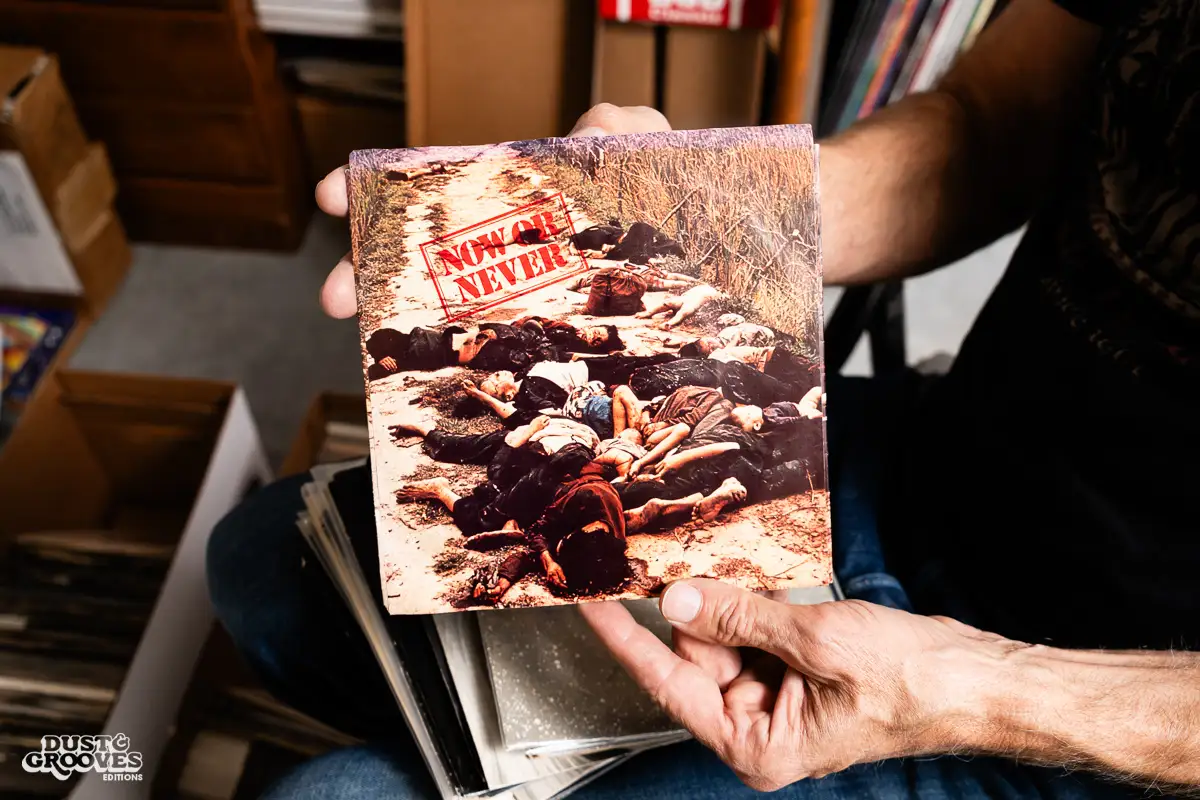
I’ve spent some time in Wilmington during the last decade, so I can only imagine what it was like in the early 1970s.
I mean, at that time, there was a small group of people there who got what the Beatles were doing, and we all knew each other. It was fun, though.
Judging by your “In Another Land” 7-inch, you were pretty into the Rolling Stones as well as the Beatles.
Oh yeah, the Stones, I loved pretty much everything. As I said, my brothers had excellent taste in music, so I was exposed to every great record that came out between 1968 and 1975. I remember getting Black Sabbath Master of Reality, and at the time didn’t like it at all; I thought it was sort of lightweight Zeppelin. Of course, as time’s gone by, it’s proven to be completely not that, and actually a pretty significant record. But, yeah, I bought everything.
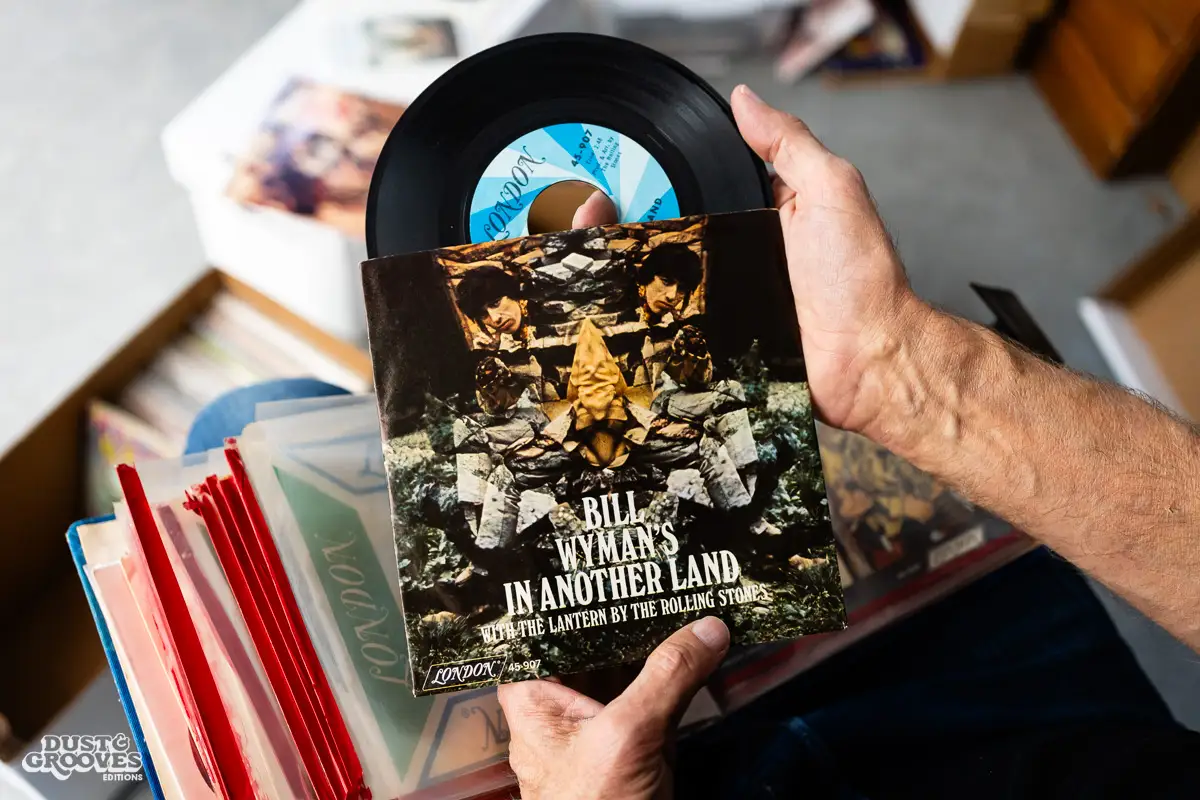
I always thought it was interesting that “In Another Land” came out as a single under Bill Wyman’s name, yet it’s included on Satanic Majesties as a Stones song.
I mean, to this day, I think it’s so odd that whatever the psychology that was at the time, it couldn’t be listed as a Stones song. It’s just so odd to me. But you know, the chemistry of bands is complicated.
Where are you on Satanic Majesties? Because that’s a record that critics hated for decades, but I feel like it has gotten a massive reappraisal over the last 20 years or so.
You know, it’s funny; I pulled it out and listened to it again about a year ago, and I had the epiphany or realization that the critics had it all wrong. They were trying to compare it to Sgt. Pepper’s, which it’s not at all like; but what it is a lot like is Mothers of Invention stuff. All of the tape-cutting, the edits, the dialogue; this comes after Absolutely Free, but it’s the same kind of thing. To me, it’s much more like a Zappa and the Mothers record than a Beatles record, and I love that Zappa stuff. So, yeah, I think it’s a pretty cool record. “2000 Light Years from Home” is always great to hear when the band even now plays it live and on tour. And the album artwork is fantastic.
"The late-’70s was an incredible time for music, and a lot of great records were coming out. It was a magical point in my life to start out working in a record store.”
Michael Kurtz Tweet
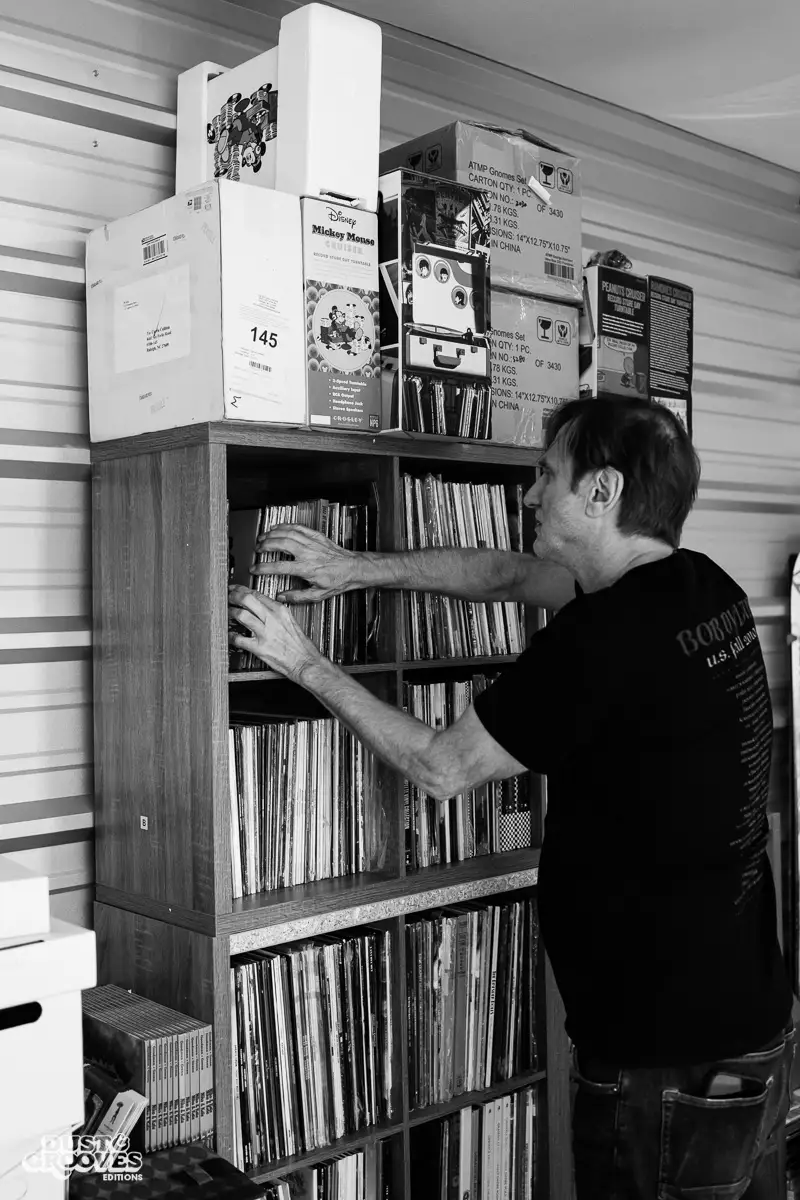
Further Adventures in Record Collecting
Dust & Grooves Vol. 2
Michael Kurtz and 150 other collectors are featured in the book Dust & Grooves Vol 2: Further Adventures in Record Collecting.
15% Exclusive RSD discount on all books available through April 15, 2025.
Use Code: RSD15 at checkout
That lenticular image was kind of the very example of a band providing extra incentive for fans to buy the first pressing.
Yeah, and I think the second band to do that was kind of a relatively obscure band, Captain Beyond. You used to be able to find their first album in cutout bins for like 99 cents, along with, you know, The Ballad of Todd Rundgren, Ultimate Spinach, [Bizarre Records’] Zapped compilation album… But anyway, I got the Captain Beyond record because of the lenticular cover. I don’t think I listened to the record more than a couple times, but that’s a great example of making a statement with the sleeve itself.
Speaking of sleeves, I’ve never seen that “brown paper bag” sleeve for Jefferson Airplane’s “Pretty As You Feel” single before. I’m guessing that your ears were pretty open at the time to the San Francisco scene and its offshoots as well.
Oh yeah. And that sleeve is a mirror image of the 12-inch version, which was a grocery bag. There was an artistic thing that they were doing there that I kind of dug at the time, though I couldn’t explain it or anything, but I loved all the San Francisco stuff. Moby Grape was really cool. I liked Santana, of course, and everything he did, and some were a little obscure that I didn’t connect with. Love was a San Francisco band, right?
"The perfect 7-inch to play while smoking pot and vacationing in Jamaica."
Michael Kurtz
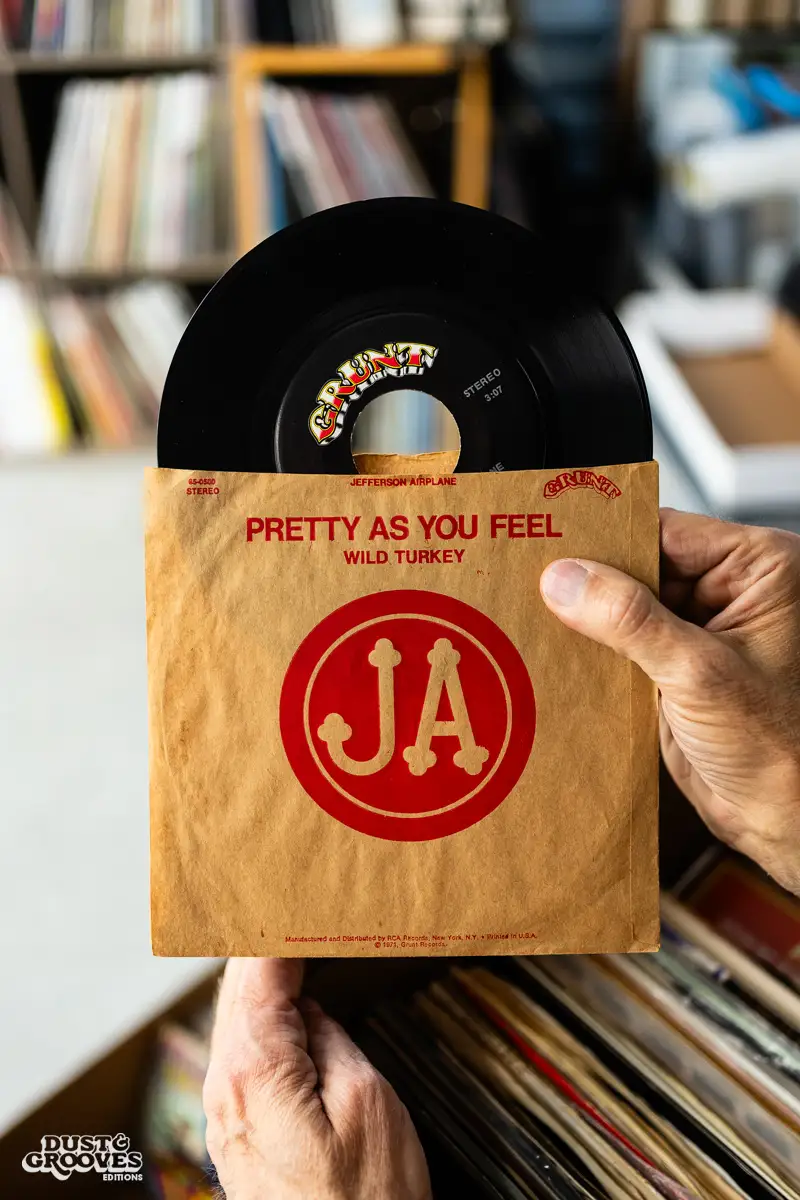
No, Love were an L.A. band, though they did play San Francisco a lot.
I guess I think of them more as a San Francisco band. So, yeah, I was really hip to what was happening in San Francisco. And the Grateful Dead, of course, which I appreciate a lot more now than I did then.
You’ve described “Wild Turkey,” the B-side, as “the perfect record to play while puffing a joint vacationing in Jamaica.”
It’s got just an awesome groove, and it’s got Papa John Creach playing violin. For anybody that’s not familiar with him, he’s got to have one of the most unique voices through his instrument that ever existed. It’s as unique as Carlos Santana’s sound—as soon as you hear it, you know it’s Papa John Creach. And I probably did smoke pot to it more than once [laughs], because it just makes you feel good. It’s a great track, and it’s also indicative of why 7-inches are cool, because you would find things like that you wouldn’t discover otherwise.
“I loved it when the B-side was almost like a postcard from the artist to their fans; those are the best 7-inches..."
Michael Kurtz Tweet
I know what you mean, though. Like you, I started out buying 45s, and sometimes the B-side would not be on an album, or it would be from the artist’s previous album, which would eventually lead me to check out their earlier stuff.
I loved it when the B-side was almost like a postcard from the artist to their fans; those are the best 7-inches. I mean, I played, “You Know My Name (Look Up the Number)” way more than I played “Let It Be,” precisely because I felt like I was tuning into the Beatles and their vibe, you know. “Let It Be” is a great song and everything, but it’s a Paul McCartney thing. Whereas, you know, the flip side was a crazy Beatles thing, and I loved it! [laughs]
Listening to it is almost like hanging out with the Beatles for a few minutes.
Exactly. And a lot of the best artists did that through their careers. I mean, I have boxes of 7-inches—I was looking at some of them before this call—and at least fifty-percent of them have B-sides that aren’t on records.
When did you start working in a record store?
1979. That was my first gig. I worked at SchoolKids Records in Wilmington. It was a tiny store located on what they used to call “the other side of the tracks,” which would mean it was in the Black neighborhood of Wilmington. And the reason for that is because the guy who owned the store, I assume, could afford the rent there because it was so cheap; because if you moved into the Black neighborhood, [the price of] real estate was suppressed. And so that’s how he got it off the ground and grew it bigger and bigger. It ended up being a really fantastic store. In those first couple years, it was all about catering to Black customers, mainly, which was a great education in music [for me]. It was everything from Stevie Wonder to Con Funk Shun, Bar-Kays, Isley Brothers, Betty Wright…the late-’70s was an incredible time for music, and a lot of great records were coming out. It was a magical point in my life to start out working in a record store.
Did you guys carry a lot of the punk and new wave stuff that was coming out at the time?
Yeah, we were that kind of record store. We had all the Stiff Records 7-inches; when Ian Dury’s “Sex & Drugs & Rock & Roll” came out on the 7-inch, I think we sold fifty copies of them just playing it in the store. The Pretenders, Elvis Costello, the Jam, Ramones, Talking Heads—we did it all, and that was just a really wonderful time.
You pulled out a New York Dolls’ 7-inch titled “Rehearsal & Live.” What can you tell us about that one?
Well, that’s just a bootleg 7-inch. Really, I’m not that proud of it, because I don’t buy a lot of bootlegs, but I like it because it’s sort of a documentation of a band I consider to be one of the great, iconic artists who, by accident, sort of made something exceptional. So I have a few 7-inches of bands like that, where it’s weird things that really aren’t legit. I bought the New York Dolls album because Todd Rundgren produced it, but then I ended up really digging it and being a big fan of that record. I think I picked that 7-inch up at Bleeker Bob’s, or someplace like that, back in the day. So it’s got that New York connection for me.
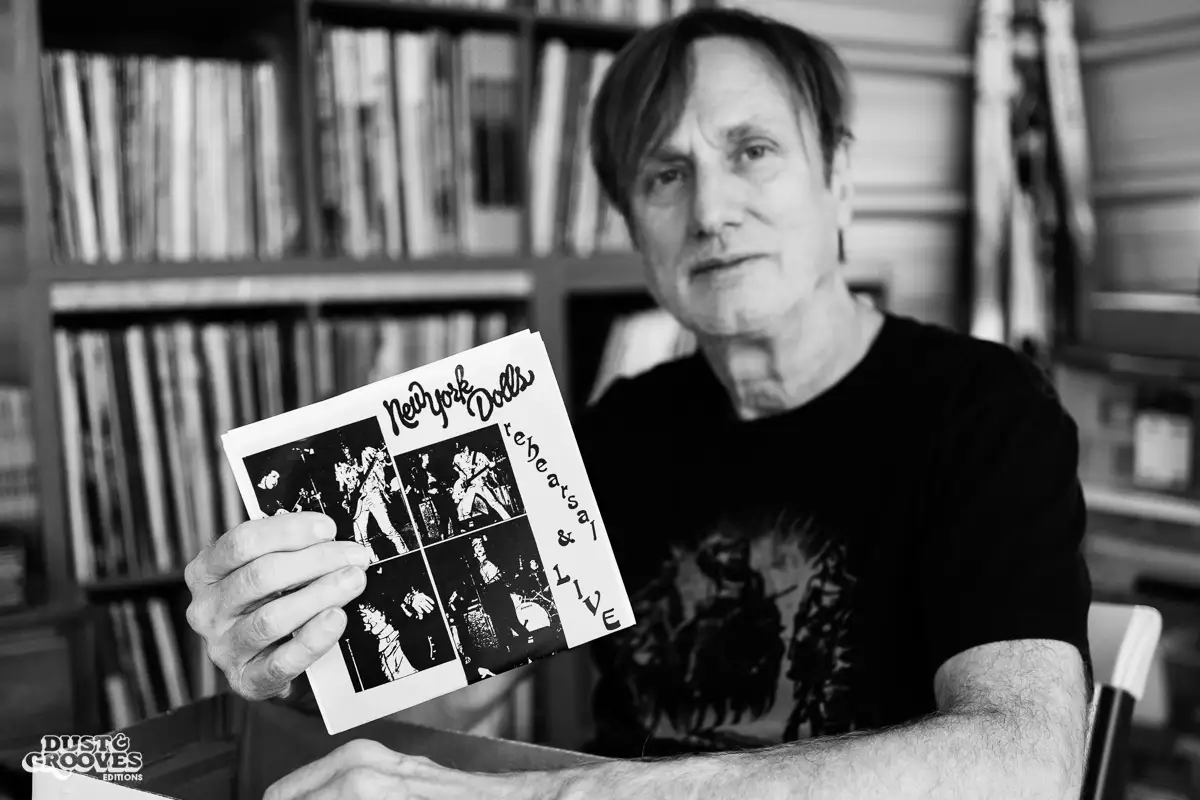
And the Dolls only made two studio albums before they broke up, so if you’re a fan—and I’m a huge Dolls fan myself—you really want to get anything you can find by them, even if it’s of dubious legality.
Well, that’s how it is with bootlegs. You do have that tug on one side that’s very real—as a fan, you want it—but on the other hand, you know, it’s not cool to support that kind of thing. So it’s kind of a double-edged sword. But I ended up buying it to have it.
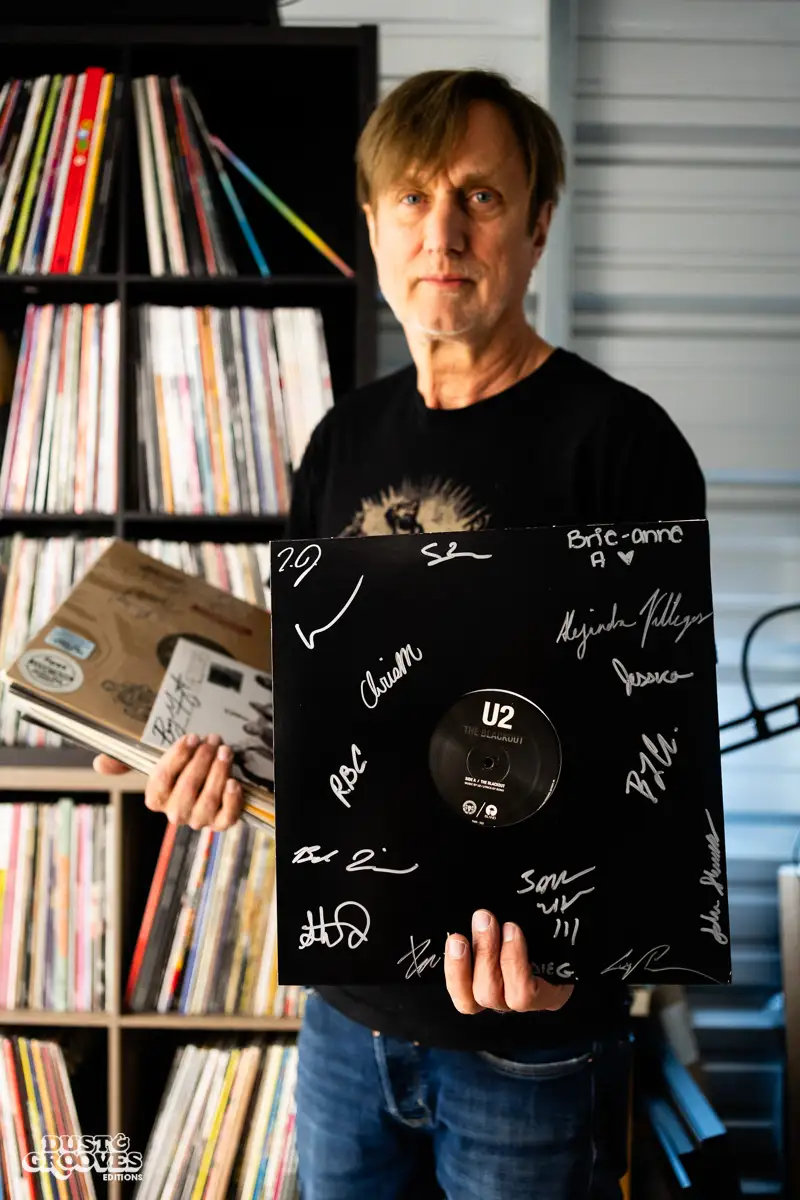
“We all make choices in life, and I feel really good about helping to bring vinyl back into people's lives and make it this special thing. It's gone way beyond anything I ever dreamed it could be.”
Michael Kurtz
What can you tell me about that U2 12-inch?
Being the guy who sort of got Record Store Day off the ground, I have this history that goes all the way back, and connections with artists on different projects. And this was a 12-inch [“Blackout”] that U2 did at Jack White’s Third Man plant; it was a last-minute pressing that was done for a Record Store Day event. I happened to be in Memphis at the time for meetings and whatnot, and I got to go to the plant. The thought struck me while they were pressing it to ask all the human beings who were involved in making this record if they would all sign it. You know, it’d be the person who slipped the record in the sleeve, the person who listened to the record for quality control, the person who glued the sleeves, the person who put it in the box, the person who mastered it, even Jack—and they were kind enough to do it. So it’s got, like, 30 signatures on it. That’s how many human beings it took to make that record.
It really does speak to how much goes into the making of a record, beyond just the artist and producer. There are so many other folks who have to be involved along the way.
Well, that’s one of the things that I feel really good about. We all make choices in life, and I feel really good about helping to bring vinyl back into people’s lives and make it this special thing. It’s gone way beyond anything I ever dreamed it could be. But in the end, most of the vinyl records are handmade. They’re small runs, you know? They are put together by a small team of people, and every one is touched by a human, which I really like. That makes me happy.
Can you give us a capsulized version of how you went from working at SchoolKids Records to co-founding Record Store Day? What was that path like?
Well, I was lucky. I got hired by a guy named Duane Ingram at School Kids. And he was a real nurturing type, positive energy and stuff. When I went to college to study music after working in the record store, he was always supportive even then; he helped me get another job in a record store. That set me up so when I got out of college and I went to Raleigh to try to make it in a band, I worked in a record store to pay the bills. And that led to me working for the Record Exchange, a chain in Virginia and North Carolina that we grew from six or eight stores, when I started, up to 14 before it all came to an end. And in doing that, I helped put together a coalition of record stores called the Department of Record Stores. Well, it was actually called Music Monitor Network at that time, named after the newspaper that we’d created for independent record stores across the country—it had a circulation of about 250,000. That led to me living in Los Angeles, getting to meet Gail Zappa, John Densmore, the Metallica guys, and connecting with record label people at a higher level than I’d ever done before. I could start dreaming about things like, “Look, can we bring vinyl back?” Because that’s how I started, selling records at School Kids. So it all kind of came full circle.
Is vinyl still your preferred listening format?
I’ll be honest—it’s what I enjoy the most, but it’s not what I use the most, because I have kids. We ride around the car, and the kids are pulling up Olivia Rodrigo or Eminem, or whatever that they’re into at the time. So as a parent, I hear music a lot through streaming; but when I’m at home, I’m pretty much listening to records. Yesterday, my afternoon was putting on the Todd album, the fifth album that [Todd Rundgren] did, the double LP. Paul Myers had just done new liner notes for the Record Store Day release, and it had been remastered by Bernie Grundman’s team, and the sound is just fantastic. So my downtime yesterday was spent listening to that album and just really enjoying it; it’s just such a nice experience, like taking a great bath or a shower or something. And at the end of it. I was like, “Okay, I’m rejuvenated. I’m ready to go!”
Michael Kurtz is a co-founder of Record Store Day, a celebration of independent record stores that has become the largest recurring worldwide event in music history. He currently lives in Bozeman, Montana with his family and his collection of Beatles records, where he serves as the president of the Department of Record Stores.
Further Adventures in Record Collecting
Dust & Grooves Vol. 2
Michael Kurtz and 150 other collectors are featured in the book Dust & Grooves Vol 2: Further Adventures in Record Collecting.
Become a member or make a donation
Support Dust & Grooves
Dear Dust & Groovers,
For over a decade, we’ve been dedicated to bringing you the stories, collections, and passion of vinyl record collectors from around the world. We’ve built a community that celebrates the art of record collecting and the love of music. We rely on the support of our readers and fellow music lovers like YOU!
If you enjoy our content and believe in our mission, please consider becoming a paid member or make a one time donation. Your support helps us continue to share these stories and preserve the culture we all cherish.
Thank you for being part of this incredible journey.
Groove on,
Eilon Paz and the Dust & Grooves team


